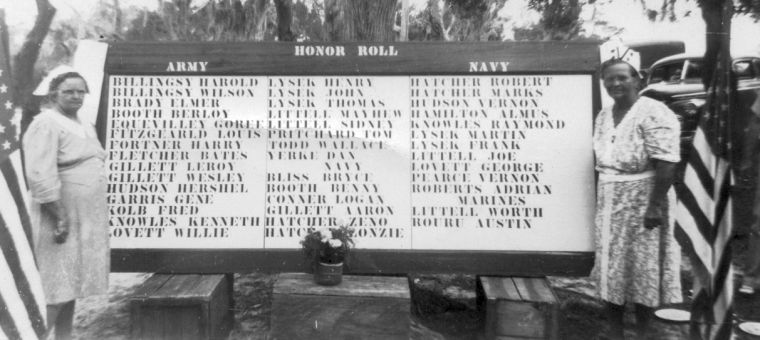
ERA III: 1940-1955: THE SLUMP
US 19 was constructed in the 1940's.
It was a two lane road (one in each direction, as opposed to Dixie Hwy that was a one lane path).
US 19 did little at first to change Hudson at first. Yet, the town did change a lot, in only few bad years.
During the 1930's, the Great Depression affected Hudson very little. It was a simple life here, as we have seen. But just as it appeared that Hudson was on a path to continued small town prosperity, the tide went out. By the late 1940's Hudson hit its own depression. In the economic career of the town, the period from the mid 40's to the mid 60's was a lowpoint. The lumber and terpentine industries went belly up, even the Fivay Company closed its doors as they irresponsibily cut down too many trees for sustained business. It would take many years for these trees to grow back. The Fivay RR closed as well. Businesses downtown closed their doors, most forever, as well, and the town stagnated.

WWII Vets from Hudson listed on the 'Honor Role' prepared by the wartime 'Victory Club.'
Though there were few here, a great many proud men went overseas and fought for their country.
Hudson men no longer working in the industries turned back to their old friend the sea. A temporary solution was found in sponging on the Gulf, just like in Tarpon Springs. For a few years, over 30 sponging, shrimping and fishing boats operated out of the Port of Hudson. Packing houses and storage warehouses were built to handle the catch, and things looked good briefly, but this proved not to last. A disease killed off many sponges, and the fish supply dwindled, so Hudson again committed assisted economic suicide. (assisted by the natural sponge disease, overfishing by people). This was the situation the town was in when, in the 1950's, though it would take 40 years to fully catch on, someone had a great idea.
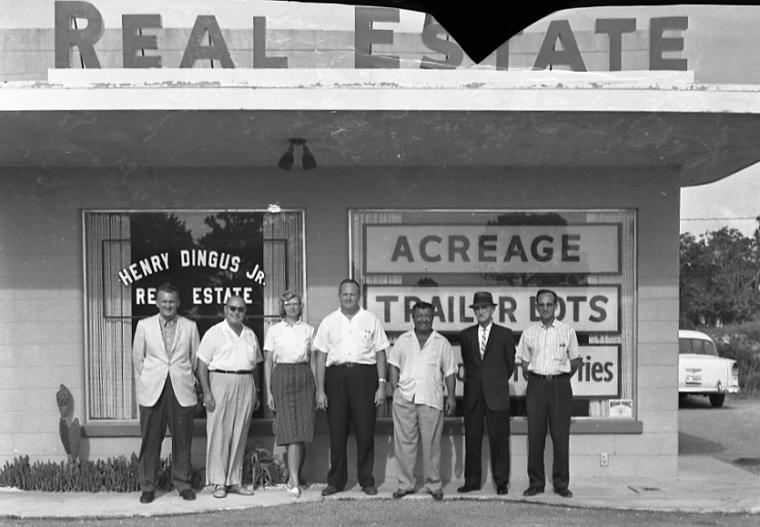
ERA IV: 1955-1965
HUDSON TRANSFORMS
One of the best, perhaps, of American traditions, is innovation. Europe may have us beat for some things, but for new ideas on the individual person basis, Americans are unrivalled in the world. And isn't that what its all about? When we match our spirit of individual freedom with communitarian ethics and good personal values, we are certainly at our very best. Do you know what? Hudson bounced back from economic decay due to great ideas and community spirit that made them happen.
In the mid 1950's a group of Hudson and Pasco businessmen got together and drew up a plan for future prosperity. Their theory was if they could somehow dig canals to bring the waters of the Gulf into people's backyards, they could divide up the plots and sell them to people looking to fish or to retire and enjoy the comforts of the Floridian climate. What Bud Clark, Hershel Hudson, WL Hendry, Henry Dingus and the people of Hudson did, was build the canals that we have in the town today.
First WL Hendry came with his sons from Tampa and began digging inlets from the coast around Hudson Springs, using the fill to create higher ground to put a few houses on in 1950. This was to become the Port of Hudson neighborhood. He had an 'open model home' that always had food and drink in the refrigerator, open to anyone who wanted to stay for a weekend and see if they wanted to buy one of the future houses. Bud Clark then started 'Hudson Beach Estates,' in 1956 and in 1957 along with the McCray family, work began on the present neighborhoods of Cape Cay, Sunset Estates and Driftwood. At the same time, Herschel Hudson began work on 'Riviera Estates' (now called Harbor Drive, btw. Port Hudson and Hudson Beach Estates), in 1957. Sea Ranch, the biggest development, and Signal Cove sprang up a few years later in the early 1960's, funded by a consortium of real estate investors based on the Hendry/Clark/Hudson model. By the late 1950's then, the sounds of dynamite and construction dredgers permeated the Floridian air in this small town.
Later in the 1970's Sea Pines and Leisure Beach were built. Henry Dingus (pictured below) dreamed of a '27 Isle' development with a beach at the end, but the days of canal dredging and detonations were over. Sea Pines barely made the cut, and Dingus only had 5 of his 27 Isles done when the State of Florida stepped in with new legislation forbidding canal dredging, seemingly forever. Look at Leisure Beach on the arial map and one can see where the other isles would have been.
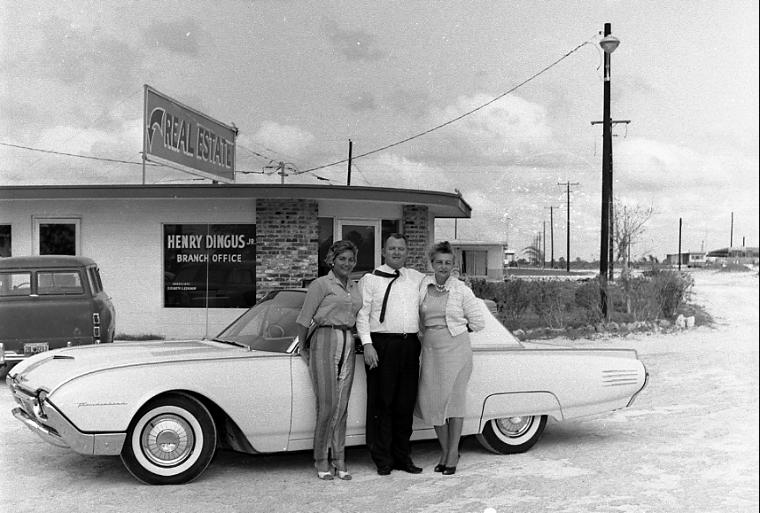
The plots would be sold in the 1960's - 1980's for more money than the land and dredging costed initially to the developers. These developers then opened real estate agencies to sell and promote their massive enterprise. Was it a shot in the dark? Yes. Did they make out? Sort of. In the 1960's the first round of canal lots were purchased and mobile homes were put on them. Some are still around today. But the massive boom in homes did not occur. By the picture below from the early 1960's, you can see that some houses were established, but the developers overestimated the market, and they broke even, though probably hiding a little profit from the public eye.
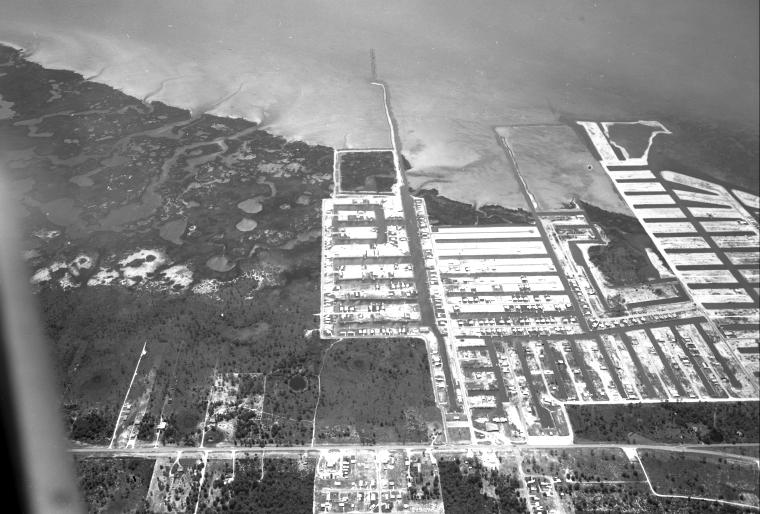
The dynamiting of Signal Cove and Sea Ranch in the early 1960's
"It can be truthfully said that no community ever had more willing workers. The citizens devoted a lot of time to civic endeavors, even to the detriment of their own business."
In the 50's-70's Hudson earned its name of 'Do-it-yourself-town.' The name was given to us by the people of Hudson, New York, the oldest Hudson in the United States. They read a special section in their newspaper's (The Star-Register) 175th Anniversary special edition, in 1960. The special edition featured Hudson, Florida with many pictures and stories from our town down here. The people noticed the unbelievable amount of things done here by the townspeople themselves, without outside help. (One can assume that NY was more... organized... politically and socially, than Pasco County was in 1960).
And the editor of the paper concluded that, "Some day, if we ever have enough money, we're going to pack up the family and go to Florida for vaction. It won't be Miami, Palm Beach, Coral Gables or any of the other beach cities. We want to meet the people of Hudson, Florida - the do-it-yourself community." Lets see why. The following accounts tell of some instances where the people put the town first, to great effect.
THE DO IT YOURSELF TOWN LIGHTING SYSTEM 1953
If you come to Hudson from a big town, you notice the streets are darker than usual. But this is much better than being completely dark, like it used to be. A local man named Tom Sawyer (yes, Tom Sawyer) organized the people into putting up streetlights on the main roads and at intersections. These were and are dim, but as said, better than the alternative. The people formed what is called a cooperative, by agreeing to pay 30 cents a month. If a new light was installed, the fee would go up a few cents, if more people moved into the area, it would go down. The lights were installed by townspeople for free, and lo, Hudson was illuminated at night. Also, in 1963, vapor lights replaced the original ones, so a Mullet fish fry was held in which all people attended. At that time, Hudson had become one of the better lit small towns in Florida.
THE DO IT YOURSELF SCHOOL IMPROVEMENTS PROJECT 1954
An example of communitarian ethic: In 1954 the Community Club of Hudson asked the Pasco County School Board to repaint the schoolhouse (where today's Hudson Elementary is) which had been neglected for a long time. When the School Board replied that they did not have the funds to complete such an operation (apparently not all things change so much), so the local people painted it themselves. Interestingly enough, later in the mid 1970's when Hudson Elementary School was being built, the local people responded to an appeal over the radio to help with the landscaping of the new school. Over 25 people came by and in a matter of hours, the school had more than 100 shrubs, trees and bushes adorning it. There were even people who had no children at the school helping.
THE DO IT YOURSELF WELCOME SIGN 1955
The classic example of Hudson's 'do it yourself' mentality is the `Welcome to Hudson' sign on US 19 and Clark St. For a long time, local people wanted a marker of some kind that would call travelers to the attention that there was a town off the main road, because most homes in the 1950's were not visible from the road. In 1955 so they dragged an old sunken fishing boat from the water to Clark St. and US 19, painted it, and made it into an appropriate sign. “Welcome to Hudson-on-the-Gulf” it read. The large hull was adorned with an original painting by a Hudson lady named Freda Marx, who painted a 'beautiful girl welcoming people to Hudson, and by here side a man waving to a fisherman on a boat in the Gulf, and around them sand, a palm tree, and a house.' It drew much favorable comment. Without donated labor, the project would have costed $700 or more. With the help of Hudson townspeople, it ended up being only $150 for the best welcoming sign on this side of the state.
Of course, this happened in the old days of true American freedom. 50 years ago in Pasco County was before the time when actions like these would land people in court and in jail for no permits, no environmental impact statements, no insurance clearance, no FEMA approval and no army of lawsuit mongering lawyers and potential `victims' to maneuver through. By the way, if you've been to Clark and 19 recently, the boat is gone, replaced with the standard county issue green sign on a pole with yellow writing, stating, 'Hudson.' Oh, you didn't see it? That's because its so small and bland that if you took it home tommorow night, no one would notice. Lets bring the boat back.
THE DO IT YOURSELF WATER WORKS 1955
Even in the stagnant 50's when there was little money in the community, things got done that cannot be done today. Even in these hard times, in 1955 the people of Hudson met at the Community Club and agreed to team up to build themselves a Water Works. Leading citizens like Herschel Hudson and Tom Sawyer (thats right, Tom Sawyer) took the lead and sold interest bearing certificates to the people, who also donated their labors. This plan had many problems right away: especially the source of the water, how to pump it, and how to fund the building of wells and pumping stations, let alone the pipes! Well the limited number of people in town signed up for water service and agreed to help pay for its construction. 60 families signed up right away and about 100 more in the next month, so construction began by a 'bunch of amateurs' who had little to no experience in building water pumping stations or laying pipe.' The will to work overcame these problems. But wait, what about the actual water? Hudson always had individual wells and springs. West of 19 in our area it is rather difficult to find a place that is more than a stone's throw away from water. So you'd think that it would be the last place to find a water shortage. Most of the water however, is salty. "Water, water everywhere, nor any drop to drink." In fact, like most places had a milkman in the 1950's, Hudson actually had a 'waterman' for food and drinking, the rest of the water needs were taken care of by collecting it from rain channeled off of the roofs into storage tanks. Some people got their water from 'tide holes' that you can notice at low tide, where spring water comes out of the holes (usually in canals now) and can be collected. Now we have water pipes and running water. "For those who never experienced the shortage of water, its difficult to imagine the joy of the residents when the day came that they could have an abundant supply in their homes."
THE DO IT YOURSELF CEMETARY, 1957
In 1924 the Hudson Cemetary was founded at the corner of Hudson Ave. and the present US 19. Today it is located next to the ABC Beer, Wine and Spirits (the other kind), shop. By 1957 the cemetary had been neglected, the old timers and trustees had passed on, and no one really took much care of it. So, the Hudson Community Club organized a general clean up and established a regular maintenance schedule. This program was in effect until the 1990's when the county took over.
THE DO IT YOURSELF FIRE DEPARTMENT, 1960
Under the name of 'US 19 Volunteer Fire Department,' Hudson got its first protection of this kind. The fire engine was bought from Pasco County for $900 and a building was constructed at the present Fire Station 10 site. It was still in effect as a volunteer force until the late 1980's when, again, the county took it over.
THE DO IT YOURSELF BEACH: The capstone project, 1960
In the process of the economic depression, downtown Hudson had been turned into the Hudson Springs Trailer Park. Yet, as more and more homes sprang up on the canals, there was no place for the people to recreate, congregate, and take in the sun and water together. There was no more downtown. So, they decided a beach would put a capstone on the massive canal project just accomplished. Bud Clark and the other developers agreed, rightly thinking it would help with home sales. When the county did not approve the funding for one, the people simply picked up the shovels and built it themselves. Hudson Beach (now a county park) was originally built by the people; led by Mr. Bud Clark. Here's how.
Bud Clark promised to donate a section of his Gulf frontage for a beach. The Community Club was to be in charge of its development, and that meant the people would have to build it themselves. The State of Florida then discovered what was going on and changed the plan by announcing that a state park would be put on the site, especially after Walt Disney surveyed the are (see below). "Never in our wildest dreams did we think something as grand as this would come along!" Well, in the next few months, the people of Hudson and the Community Club talked over some issues that were to come up. Any State Park would need a good road coming off of the main drag, which was at the time the two lane US 19. So the present Clark St. was envisioned. Bud Clark donated the land, and people were so interested that they, "offered to go inland and dredge out artificial lakes to bring the necessary fill to the site of the road. The people living in the area of Hudson Beach will never know how hard the few persons then living here worked to have this road built."
So Hudson now had a road, Clark St., leading to a beach that did not exist. The State decided to pull out of the development of the State Park, and the citizens were left to their own devices again. Tom Sawyer arranged for Pasco County and Bud Clark to sit at the same table and discuss the matter. "Tom Sawyer never like the water. He said that it was only good for drinking, washing clothes and as a medium in which fish swam, but he put on his fighting clothes and pulled this project through. He dreamed of a small city growing up here and knew that the beach would be a valuable asset in the future."
And it is. No one in 1960 foresaw the amazing growth of the next decades, but from this beach can be seen some of the most beautiful sunsets in the world.
THE DO IT YOURSELF AIRPORT, 1964
A Pasco Sheriff named Eric Huddleston got some people together and had an airfield built (where Sea Pines is today). The ladies in the community made a feast for the grand opening on April 2 and it was attended by locals and flying enthusiasts from all around Central Florida. Tragically, the airport closed when Eric died in a plane crash shortly thereafter, but for its short life it provided residents here with the specticle of flying over their houses and throwing things out the windows.
CRISIS IN THE WORKS, 1964
In the mid 1960's violent protests were aroused when the lighting system was turned off. It seems that many people withdrew their monthly 30 cents because 'If I pay the lights are on, but if I don't... the lights are still on!' This we know well today. At the same time, because of the new canals that brought Gulf water into everyone's backyard, the wells of the water works became more salinated. Uh, oh. Well the Community Club called everyone in town and secured enough pledges to turn the lights back on, and at the same time, the Community Club branched off and established a Corporation called the 'Hudson Waterworks.' Yes, we still have it today (you pay them every month). The Waterworks dug wells and bought land on the other side of 19 and soon, the water was flowing at warp speed.
THE DO IT YOURSELF POLICE FORCE, 1965
Well by now you may have seen this one coming. The public here funded one cop with one car to patrol Hudson, the little town still only west of 19. "The seat of county activities is too far removed for the Sheriff to be effective here." The cop's name of Curtis Kuhn who moved from Ohio where he was an officer in his previous town. The Hudson Police Department, like the airport, was short lived however, because Kuhn was hired a month after beginning his new job by the Pasco County Sheriff's Office and elected for a 'career change.' ***Editor's note: I found a 'Hudson Florida Police Patch' on ebay in March 03. Consider this: there were probably only one or two of these things made, and are probably quite valuable to collectors. I bid 10 dollars on it (before I knew how valuable it may have been) and lost. It had an American flag on it, with 'Hudson Florida Police' above it. Below was a simple line, "I pledge allegiance to the flag." That would've been nice to have.***
DISNEY WORLD IN PASCO COUNTY?
When Walt Disney came to Hudson in the 1950's, he liked the location and wanted to put an amusement park here called, “Disney World.” As Disney was negotiating with the State of Florida for the land a group of Hudson dwellers did not want their property confiscated by the State and went to Talahassee to fight the coming eminent domain battle. They were led by a German immigrant, a dissenter of the Nazi Regime who moved to the USA. In court, he stated emotionally that in Germany the government could do what it willed, good or bad. There were less freedoms and rights available for property owners and it seemed to him that the State of Florida was doing the same thing to the people of Hudson. This convinced the State and it told Disney to keep looking. If things had went differently, Cinderella's Castle may have sat on Hudson Beach.
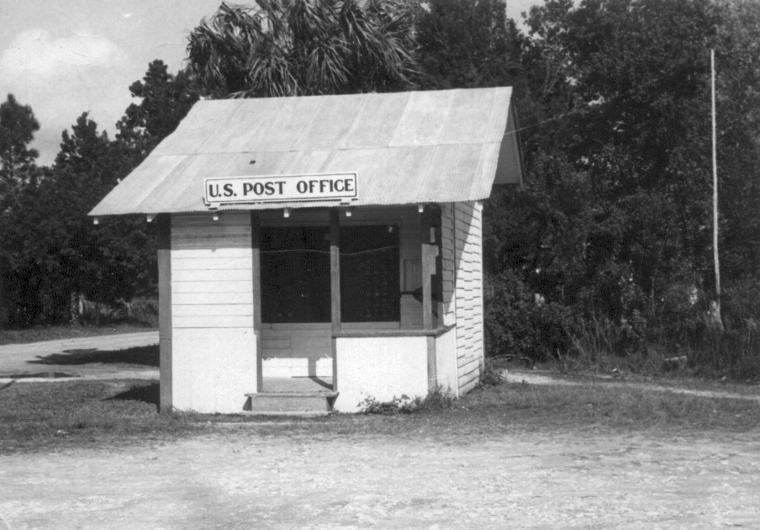

The winds of change at the post office: The one on "Ripley's Believe it or Not" is on the left
The Hudson Post Office used to be famous. In the 1940's and 50's it stood at Old Dixie and Hudson Ave. It was featured on 'Ripley's Believe it or Not' as the smallest Post Office in the USA. During the stagnation of the period, it was closed and Hudson mail went through Port Richey. Often, in this age before MapQuest and the like, people trying to visit Hudson passed it because everyone had a Port Richey mailing address. Then when the canals were built and Hudson began to gain population, the majority of mail going to Port Richey was destined for Hudson anyways, and recently a modern USPS Office opened here.
ERA V: 1965-1985
A QUIET FLORIDA FISHING VILLAGE
Though the real estate developers sold off most of the land, relatively few people in the world knew where Hudson was. Those who did, usually associated it with fishing. Prior to the white man's settlement of the area, the Indians fished here for food. The first settlers depended on the sport for food as well. Now, with the canals bringing the Gulf into everyone's backyard, sports fishing reigned supreme. In cold weather trout and redfish swam into the canals, and it was usual even for ameteurs to catch 4-6 pound trout. Fish were plentiful and the fishermen were waiting for them. Experienced fishermen were catching 50-75 a day. The most popular canal was the one parallel to Clark St. on the way to the beach, at times 150 fishermen were there at a time.
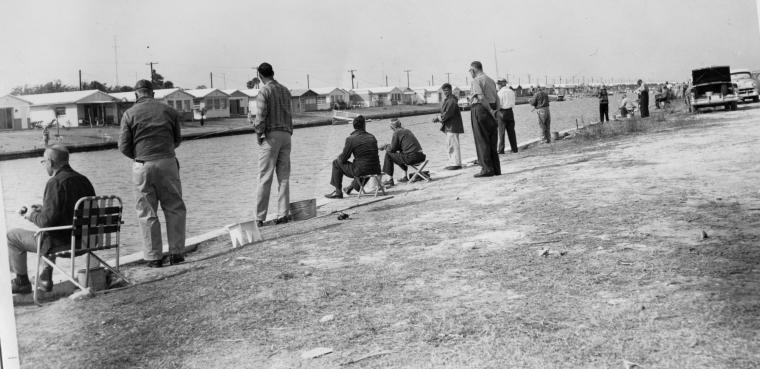
A St. Pete Times writer wondered about the 'fish stories' coming from fishermen on the Hudson canals and arrived on Jan. 3, 1959 only to write the following in the paper the next day, "We saw the greatest display of trout fishing in years. 3 pounders were the routine, 4 pounders were strewn around like logs, and 5 pounders numbered a half dozen that morning." The writer was Red Marston. Fishing influenced people to buy a home here in the 1960's, as stories of the catches being landed fell on more and more ears. Not only Hudson people, but visitors came during the 1960's-70's from New Port Richey, Brooksville, Dade City, even Tampa, St. Petersburg and Clearwater.
As fishing exploded and Hudson became known from St. Pete to Crystal River as a place for bizarre catches and trout fishing, the town's reputation grew. Let's look at some of the highlights of Hudson fishing that people talked about:
1966 JK Jones of Land O Lakes catches a 6 ft. Tarpon off of Harbor Dr. Tarpon rarely enter the canals, today one did.
The fish struggled for over an hour and was brought ashore 700 ft. from the original position. "While the struggle
went on, a porpoise harried the Tarpon, seeming to help it at times, seeming to toy with it others."
1966 Bud Dean of Hudson on a boat offshore mackerel fishing succeeded in lassoing a sea turtle but it was impossible
to bring it in without capsizing the boat. Just in time, Slim Mattix on his larger boat came to the rescue and
when the reptile was hauled in by four Hudsonians, it weighed in at nearly 400 pounds.
1970 A sensational catch of an 8 ft. bluefin tuna sighted in a canal was made by a group of Hudson men in a strange way.
They harried it for more than 6 hours with various weapons and finally shot it with a spear gun, arrows and
put a lasso around it to haul it in. It weighed in at an amazing 525 pounds but that was 12 hours later.
People came from all around to see this catch, and it is, so far as anyone knows, the all time record of 33 years.
Local bait and tackle business flourished in this environment. Fred Morrill sold hundreds of needlefish lures in a week after people reported it worked for trout. Other bizarre instances occurred with people living on canals trying to find the best baits: some used perfumes, some bags of chicken bones, some sardine juice... usually the most unpleasant odor was the one that worked, sometimes the fish were too gross smelling to eat after ingesting baits like ones dipped in asafedita. One man had a stinking mess of a bait going in his backyard. He filled a bag with ham bones and bread, dumped asafedita on it, and anchored it in the canal. The material was replenished often but the fish he caught near it stunk.
A conversation with a Hudson person can be started like this, "I caught a _______ just a few ____ ago. What about you?
Around 1966, Hudson's shrimping industry was prime in the area as well. That year, a company headed by a Mr. Burch (4 shrimp boats) shipped 250,000 pounds of shrimp to Miami every week on trucks that left carrying 40,000 pounds... every day.
THE TOWN BEGINS EXPANSION EAST OF 19
US 19 was expanded to 4 lanes in 1972, but this had little effect on old Hudson. What the highway did do is provide an arterial for the development of the GREATER Hudson area, south to SR 52 and East of US 19, for the first time. Development encircled the tiny waterfront village and then, by the late 1990's the boom began.
While Sea Pines and Leisure Beach were being built west of 19 as the last waterfront communities of their kind, developers began looking east as well, to the virgin land on the other side of US 19. A whole host of projects were begun in the 1970's here. The heavy hitter was the Beacon Woods project of state of the art homes. Today, Beacon Woods is a nice mix of fine homes from the 1980's to today. They sit on good sized lots, many have pools and lanai screen enclosures. Other subdivisions built up during the 1970's and 80's include Hudson Terrace, Taylor Terrace, the Garden Terrace and Florestate Trailer Parks, Heritage Village, Brown Acres, Palm Terrace, Coventry Green, Country Club Estates, Gulf Highlands, San Clemente, Senate Mobile Homes, Ponderosa Park and, of course, Beacon Woods.
Later on in the 1990's luxury homes and subdivisions have entered into interesting Hudson mosaic of... standards of living. Beacon Woods East, Berkeley Woods, The Estates and other new subdivisions are being sold out at an astonishing rate, as more and more people find Hudson's great cost of living and beautiful scenery conducive to a happy day to day life.
ERA VI: 1985-2000
CONSTRUCTION AND POPULATION INCREASE
NEW COMMERCE AND INDUSTRY COME TO TOWN
In the 80's and 90's US 19 fulfilled its role as a true arterial, and attracted many businesses to this area. The first big shopping center (Beacon Square at SR 52) opened in the late 70's and others since then. And... people came to town as well. It is amazing for us today to think about raw population in this area. In 2000 there were 44,000 people in greater Hudson, from the coast to the Suncoast Parkway. In 1980 there were 28,000. In 1970 there were 2,000 and in 1950 there were around 300.
Commerce and Industry follows people, and brings more. More people bring more commerce and industry, and so on the cycle continued through this fifteen year era. KMart came, Winn Dixie came, a few fast food joints and many other restaurants as well. Think about this: in 1960 there was one general store. One.
West of 19 in the old section was a different story. As it happened, during the 1980's-90's, while all the other canal-waterfront towns in Florida boomed in property value and services, Old Hudson remained a backwater, and a complete unknown. Though the canal system is large (one of the most extensive cohesive inland waterway systems in the nation)- 25 miles of them- it still had many vacant lots on them. Most of the roads were dirt, everyone was on septic and the utilities were lacking. Hudson was a poor city in a poor county and while the other waterfront-canal cities in Florida and California (Ft. Lauderdale, Pompano Beach, Hernando Beach, Punta Gorda, the Keys, Venice Beach CA.) rose in price and flourished, Hudson did not. Pinellas people made fun of Pasco, Pasco people made fun of Hudson as a haunt of old trailers and rednecks, the Ku Klux Klan even was located here. Until the late 1990's, one could buy a gulf-front house for $80,000 and a canal house for even less.
Nevertheless, local people like retired WWII Navy veteren George Jamison and longtime resident Mike Flanagan built houses during the late 70's through the early 90's, for people to buy on the canals. The interior subdivisions were beginning to fill up as well, and things were looking up. In March of 1993 a flood hit the older part of the town, and many people were out of a home, and out of insurance too. Although the times had changed and not as many people knew each other anymore, again, the people banded together and helped each other out. Many of the original trailers were not worth repairing and scrapped. At the same time, FEMA regulations stated that no structure may be built on a canal... on the ground. Anyone today who wants to build a house in Hudson west of 19 has to build it on stilts in the air. Most mobile homes that are on stilts are model 1994! The 'No Name Storm,' brought in water from the Gulf. Luckily no one was hurt, and in some communities, like Cape Cay, there is to this day every March a 'Flood Party' on the anniversary of the 1993 'Hundred Year Storm.'
ERA VII: 2000 - TODAY
Today our star is rising- mostly.
While retaining its status as an old fishing village, no matter your index: business, commerce, real estate, home value, residential income, employment etc., this area is into its boom phase, and better twenty years late than never! The dreams of all those developers like Dingus and Hendry, Clark and Hudson are coming true for a new generation. As detailed in other sections of the Hudson webpage, today is a time of continued growth east of 19 and redevelopment west of that street. Big businessmen like Mike Lowe and Mike Malacos are spearheading the transformation of the old section into a vital, cogent area once again. Now that we know the unknown... that is, Hudson's history, it is clear that some of the best traditions of the town are present in its current boom. Like a fresh blanket of snow up north, or a balmy sun soaked weekend day in the south, our renewal is underway.
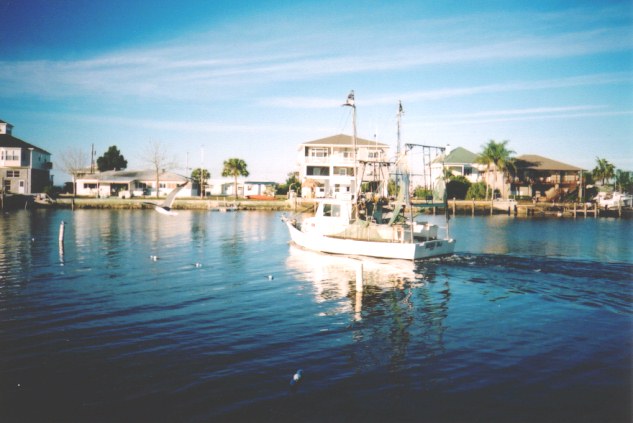
Do we lose anything in all of this? Certainly the old ways will and are vanishing. Up until 2004 Confederate flags were allowed at Hudson High School, and now the school board arm of the government has abridged that because some students, at night, hoisted up the Rebel Flag in place of the American Flag in the front of the school. The NAACP and other organizations are now involved in the affairs of this small town, preaching universalized values, which are now mandatory. As George Orwell might say, "Multiculturalism is Strength, Freedom of Association is Slavery."
The old ways are being eliminated by force and demographic change. Even the old friend our sea, that brought Hudson shrimpers (and Tarpon Springs shrimpers) a livelihood for three-quarters of a century is now bringing in a different sort of catch. Unrestricted Free Trade. NAFTA and the FTAA are Strength, Protectionism is Slavery.
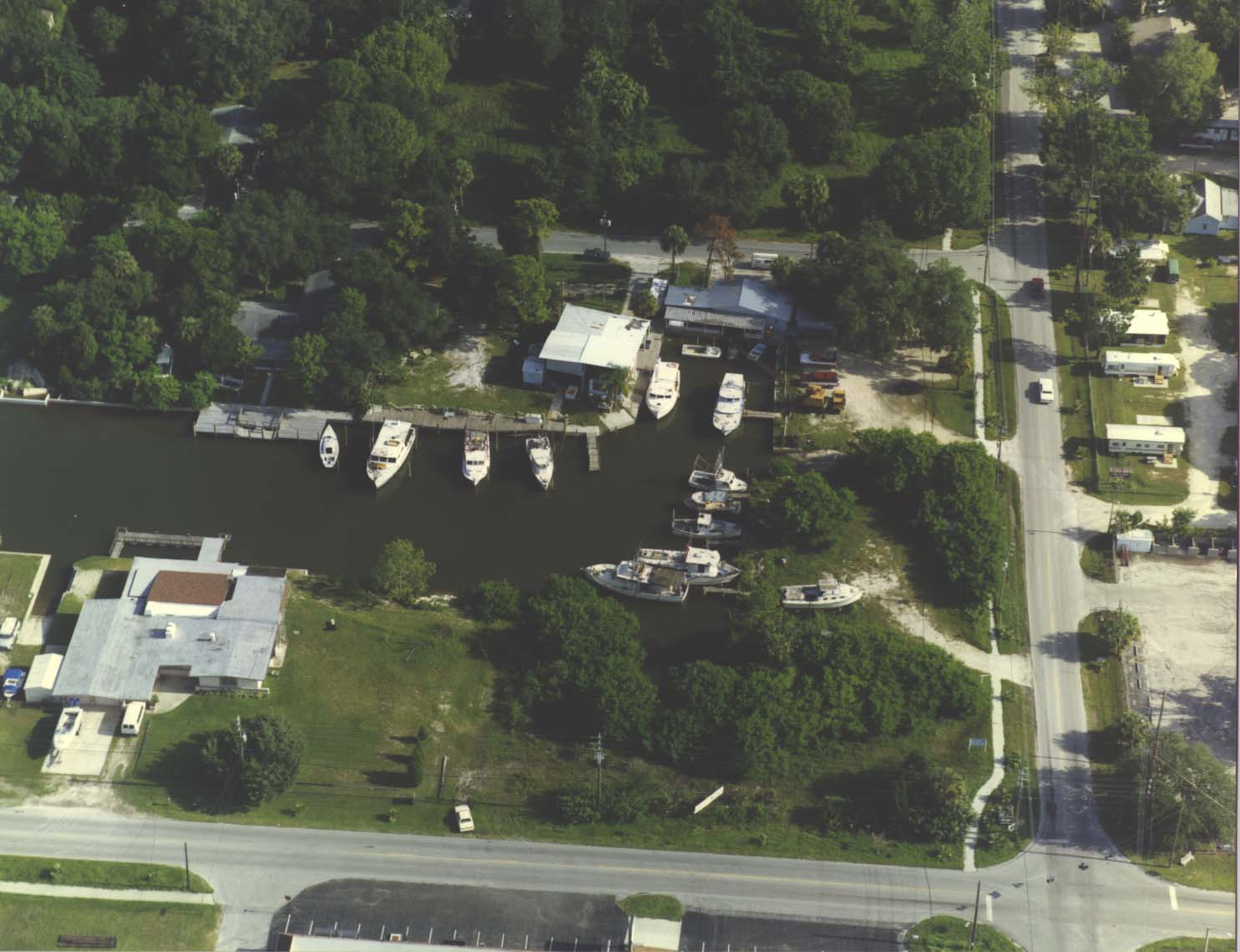
Echoes from the Past
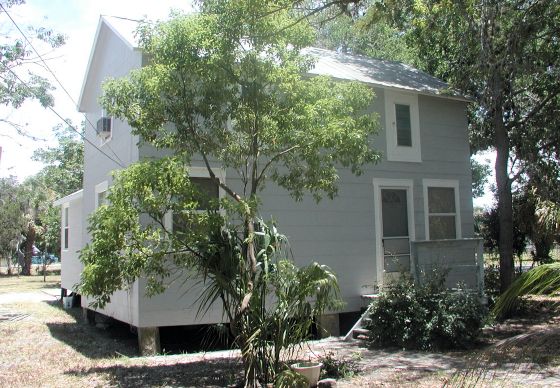
The original Hudson home, a historical monument.
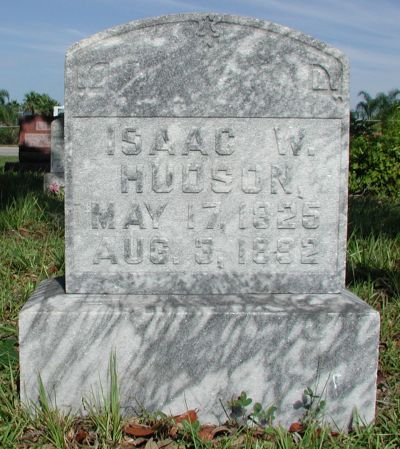
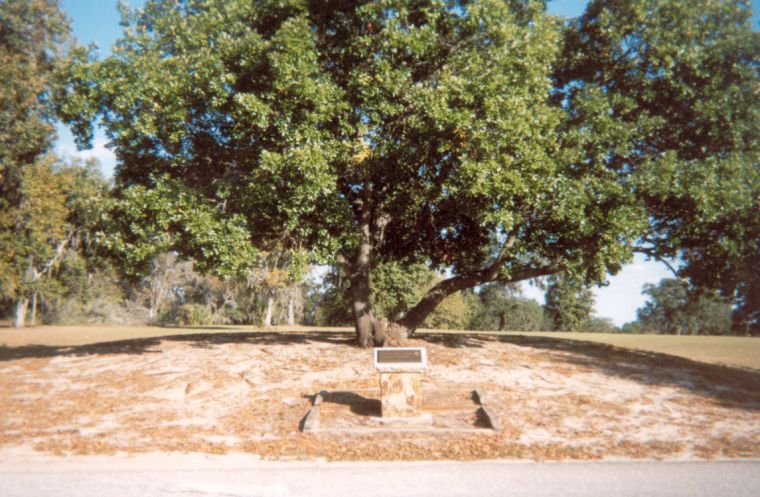
The founder's gravestone An old Seminole Indian burial mound
In 1999, the State of Florida scoured the state looking for historic places conducive to having a 'trail' that people could walk on.
Hudson was one such undiscovered place found by the state, follow this link for the official text of the State's
Hudson-Bayonet Point Historical Trail!
Congratulations, you have arrived at the end of history. Please don't forget it.
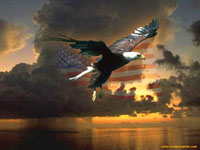
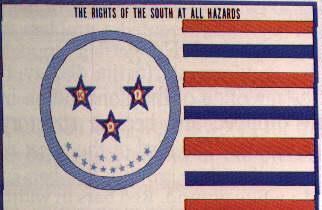
Just like a philosophy professor is not a philosopher, nor an art appreciator an real artist, let me apologize for them: they do just that, appreciate. And that is better than nothing. Love's opposite is not hate, it is nihilistic apathy.
Little of the information in the History Page is original. The way it is organized and presented here is, I believe, different and more accessible. Yet, the distillation of materials by myself for this page does not mean that I was there to witness the events and characters portrayed. I only read through the existing documents and took the best from each, recreating it here for the public. We rely on evidence and books written 30 years ago for most of it, but Hudson's history is not that old. Almost within living memory. Any errors are the fault of Dave Tamm 727-243-2034. The sources used in the history section of husonfla.com are: Personal interviews, Mr. Miller of Gulf High School's amazing compilation of pictures and data for the New Port Richey area, at http://www.fivay.org, and the following manuscripts:
Ash, Pauline and Knowles, Brenda, 'Early Settlers of Hudson,' (pamphlet) c. 1978
Dill, Glen, 'Suncoast Past,' c. 1987.
Horgan, James, 'Historic Places of Pasco County,' c.1992.
Miller, Harry, 'The Story of Hudson.' (pamphlet) c. 1973.
Obenrader, Julia, 'West Pasco's Heritage,' c. 1974.
Tamm, Dave, 'Hudson... Where the Sam Hill is that?' (not yet published)
<----------------Speed home with posthaste!